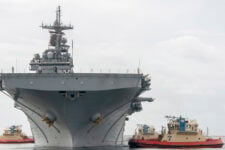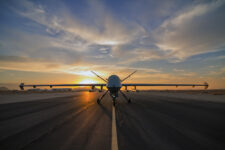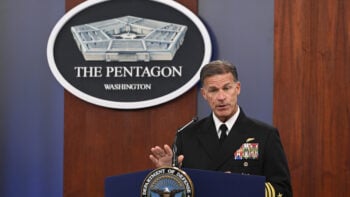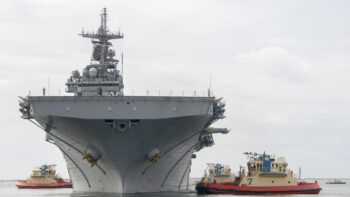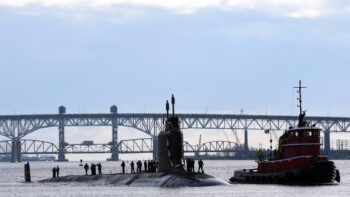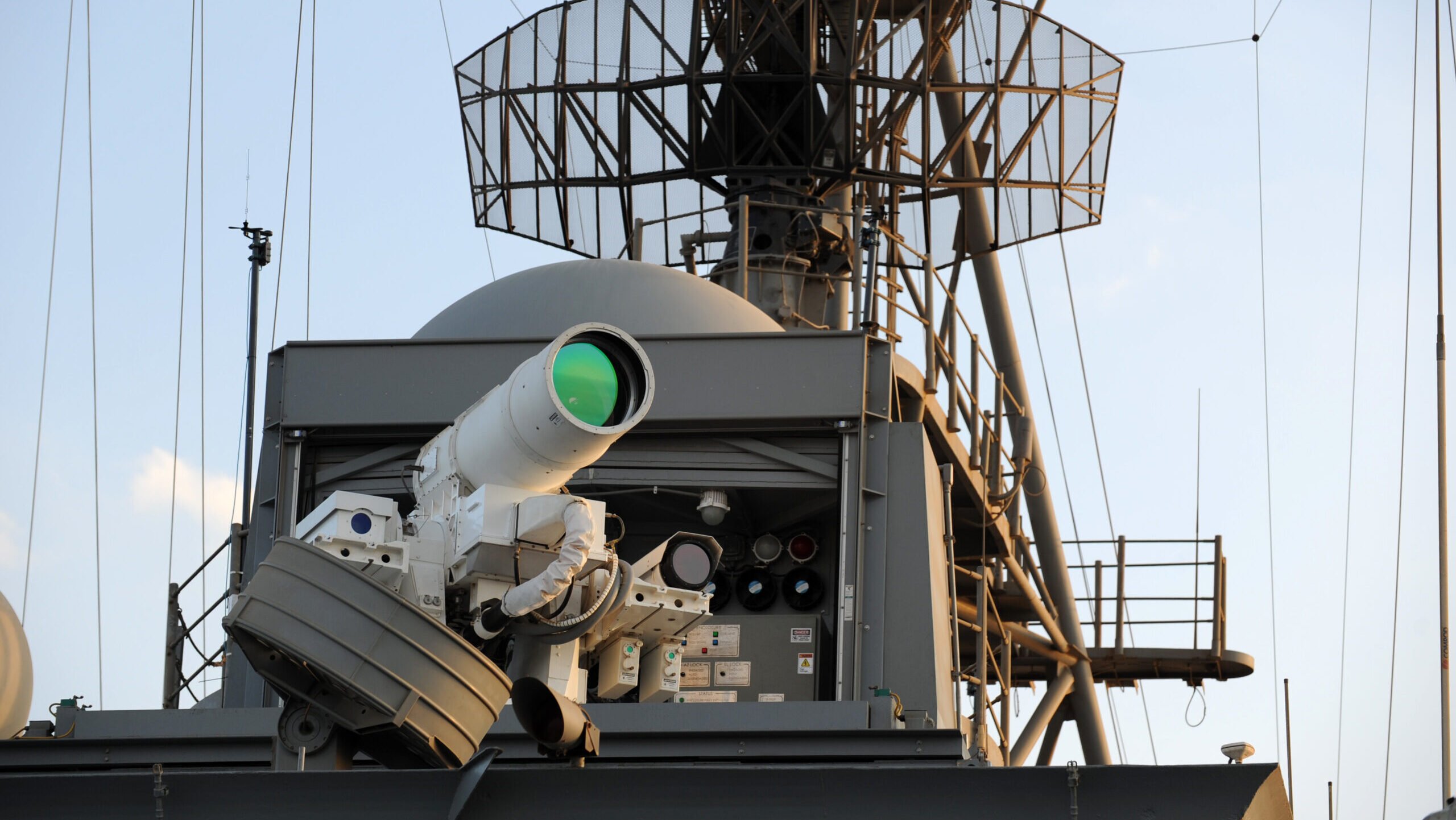
The Afloat Forward Staging Base (Interim) USS Ponce (ASB(I) 15) conducts an operational demonstration of the Office of Naval Research (ONR)-sponsored Laser Weapon System (LaWS) while deployed to the Arabian Gulf. (U.S. Navy photo by John F. Williams/Released)
SNA 2024 — The Navy and industry need to be more intellectually honest when discussing laser weapon systems, according to an admiral overseeing the technology’s development. And speaking plainly and honestly about developing that tech, “It’s hard,” he added.
“Sometimes we have a tendency to over promise and under deliver,” Rear Adm. Fred Pyle told attendees at the Surface Navy Association’s annual symposium on Wednesday. “We need to flip that to where, when we’re intellectually honest, when we’re honest with ourselves from a technology capability, that we have an agreed upon sight picture of what it’s going to look like to deliver that capability.”
Speaking to reporters following his remarks onstage, Pyle added, “I can go back to the Arabian Gulf and probably 15 years ago, we had a ship called the Ponce that had a laser on it. … We’re still working on that technology.”
Laser weapons or “directed energy” technology has been a fascination for the Pentagon writ large for decades. Within the Navy’s research and development portfolio, especially, numerous projects can be found that in one way or another have sought to push the needle closer to having a sailor underway fire a laser that knocks down an enemy drone or takes out a small boat. One of the more notable projects coming close to that vision is HELIOS, made by Lockheed Martin, and currently equipped onboard the Preble (DDG-88).
RELATED: Lockheed Delivers High Energy-Laser Four Years In The Making To US Navy
But recent surface Navy operations in the Red and Mediterranean Seas, combined with excitement from top Navy leaders this week about directed energy, has prompted the question here and elsewhere: Why isn’t the Navy shooting down operational targets, in the Med or elsewhere, with lasers yet?
Back to Pyle’s role in all of this.
The admiral’s billet is what the Navy calls the director of surface warfare requirements or “N96.” Put plainly, his job is to guide the money for the development and fielding of new surface ships as well as certain weapon systems used onboard them, potential lasers included.
The day before Pyle took the stage on Wednesday, the Navy’s top surface warfare officer, Vice Adm. Brendan McLane, expressed frustrations with the Navy’s current pace of laser weapon system development.
“I am not content with the pace of directed energy weapons. We must deliver on this promise that this technology gives us,” he said.
One of the key promises of directed energy weapons are their cost-per-shot. The Navy is increasingly concerned about the idea of drone “swarm attacks,” wherein multiple drones, potentially from different warfare domains, bombard a ship in concert. Eventually, the cost of taking down a relatively cheap drone with a multi-million dollar missile just doesn’t make sense. If fielded as envisioned, one shot from a well-made laser should cost a fraction of the price — at least in theory. But for now, that’s still mostly all it is.
Read more of Breaking Defense’s coverage of the Surface Navy Association’s annual symposium.
“We continue to invest in directed energy capabilities,” Pyle said. “It requires space, weight, power and cooling, which can be a challenge on our current surface combatants.”
He said that HELIOS and the Preble (DDG-88) are expected to conduct testing over the course of this year. He added that, lasers or not, the current capabilities the Navy is using in the Middle East right now to defend both Israel and commercial shipping are “performing extremely well.”
“But we’re very focused on delivering directed energy capability and we’re building it into the future [budget requests] in mind with our frigate and the DDG(X) [the next-generation destroyer],” he said.
The hold up in fielding lasers to the fleet has also gotten the attention of McLane and Pyle’s boss, Navy Secretary Carlos Del Toro.
“I’m very, very excited by it,” he told reporters of directed energy weapons following his remarks here Wednesday night. “Like the SWO boss [McLane], I’m concerned that it’s taken a long time to come to fruition.”
“This is the way of the future,” he continued. “And we are going to be looking in the fiscal year [2026 and 2027 budgets] and into the [future] on how to accelerate the deployment of HELIOS and HELIOS-like capabilities on our [destroyers] because it is the way that we will need to address the swarm attacks of drones on our systems.”

